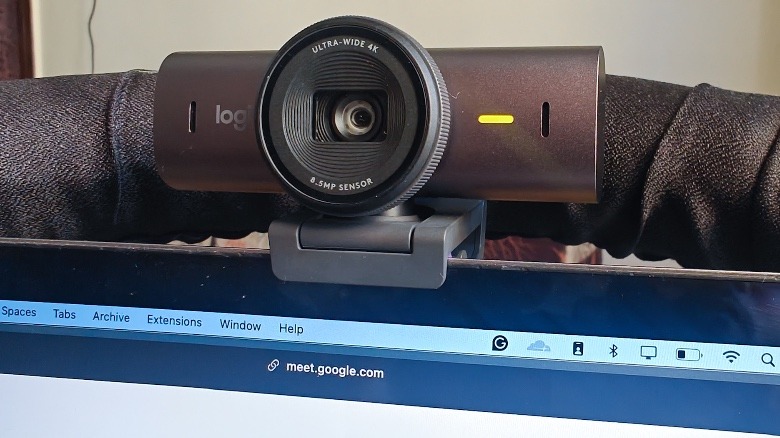The webcam is armed with a Sony STARVIS image sensor that offers an 8.5-megapixel resolution, up to a 90-degree field of view, and 4x digital zoom. The webcam is capable of 4K 30fps or full-HD capture at 60fps frame rate. The raw quality is fairly impressive in well-lit surroundings, especially if your workstation is exposed to natural light. There are plenty of colors in the image, a good balance between foreground and background focusing, and acceptable sharpness.
You also get a bunch of software-side and AI-fueled optimizations happening in the background, including light compensation, exposure tuning, facial enhancement, and noise compensation. But the overall result is impressive, irrespective of the video calling or streaming platform you deploy the MX Brio at. I also love the fact that there’s a physical privacy shutter to hide the camera with a simple twist of the rotating lens frame.
The dual-beamforming mics on the webcam are an additional benefit. My Asus gaming laptop’s fans get fairly loud when running in Turbo mode but the beamforming mics ensured that my voice was still discernible to the person on the other end during multiple WhatsApp and Google Meet video calls. It’s not exactly a match for dedicated mics, or even the quality you get from a phone but the improvement in overall audio quality is still welcome, especially when facilitated by a webcam.
As far as controls go, you get plenty in the Logi Option+, LogiTech G Hub apps. From basic tools like brightness and exposure sliders to more granular options like exposure, vibrance, light compensation, and HDR, there’s plenty to play with here. Some of them – especially auto exposure, HDR, auto-white balance, and light compensation – make a visible difference in low-light surroundings. Field of view adjustment also comes in handy, allowing you to pick between 65, 78, and 90-degree panorama of the workspace setup.


